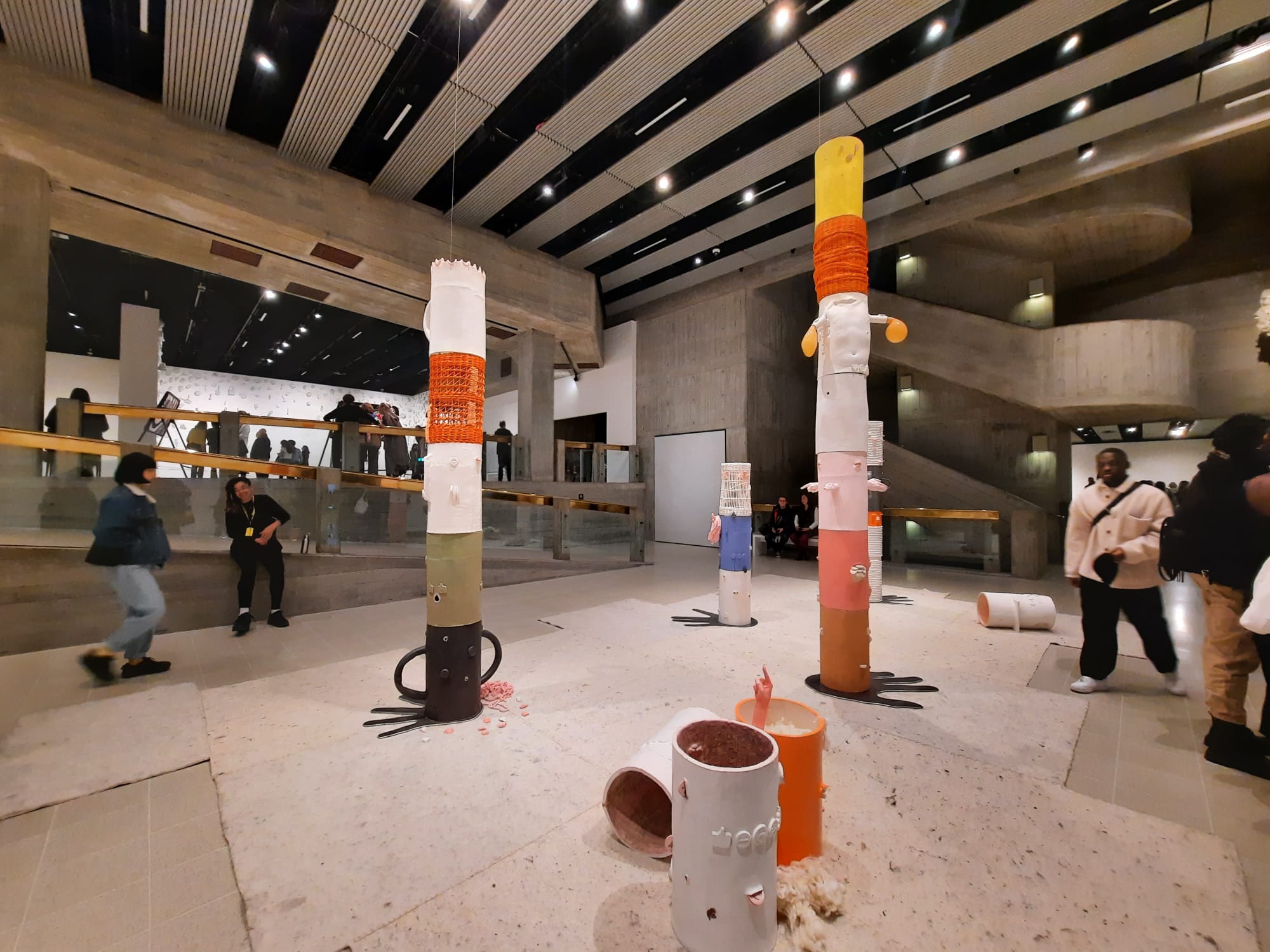Strange Clay: Ceramics In Contemporary Art – Hayward Gallery, London
A review of Strange Clay: Ceramics in Contemporary Art, on now at the Southbank Centre’s Hayward Gallery. This most fundamental of materials, used for millennia in various artistic ways, proves to be ultra-contemporary as well.
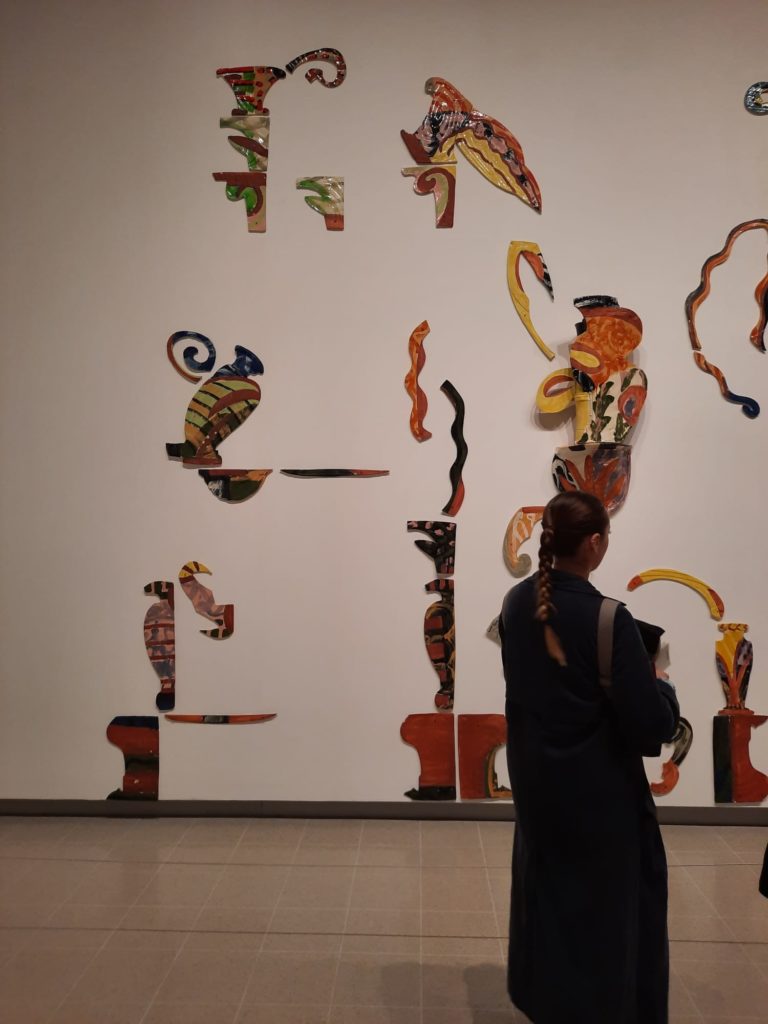
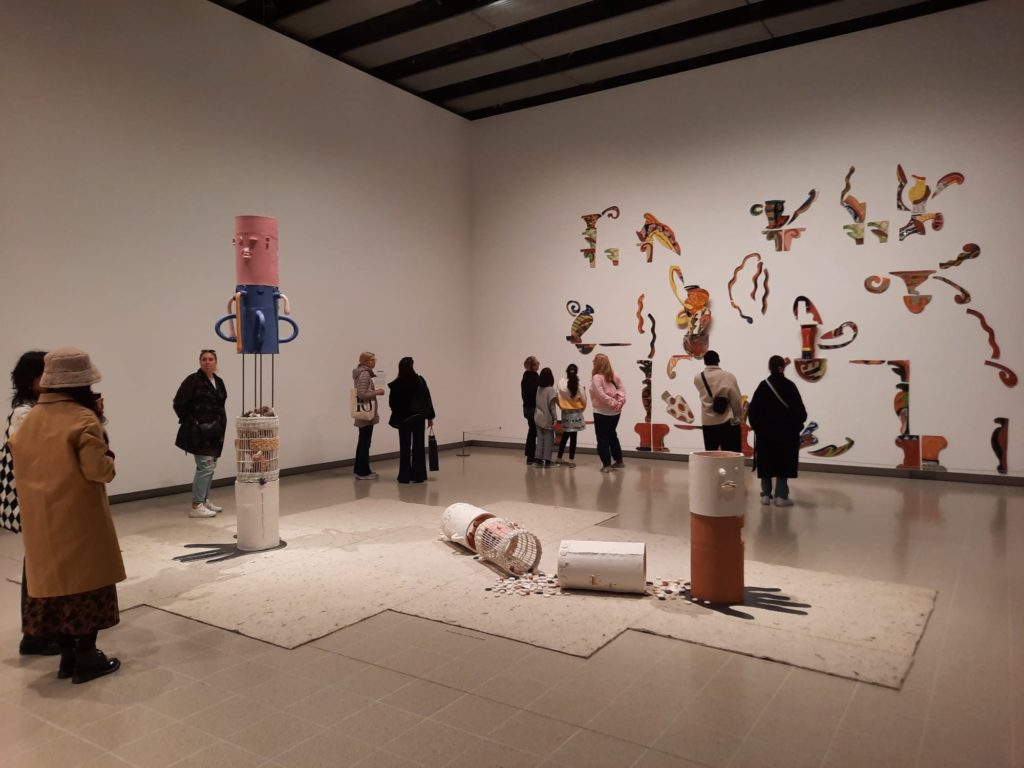
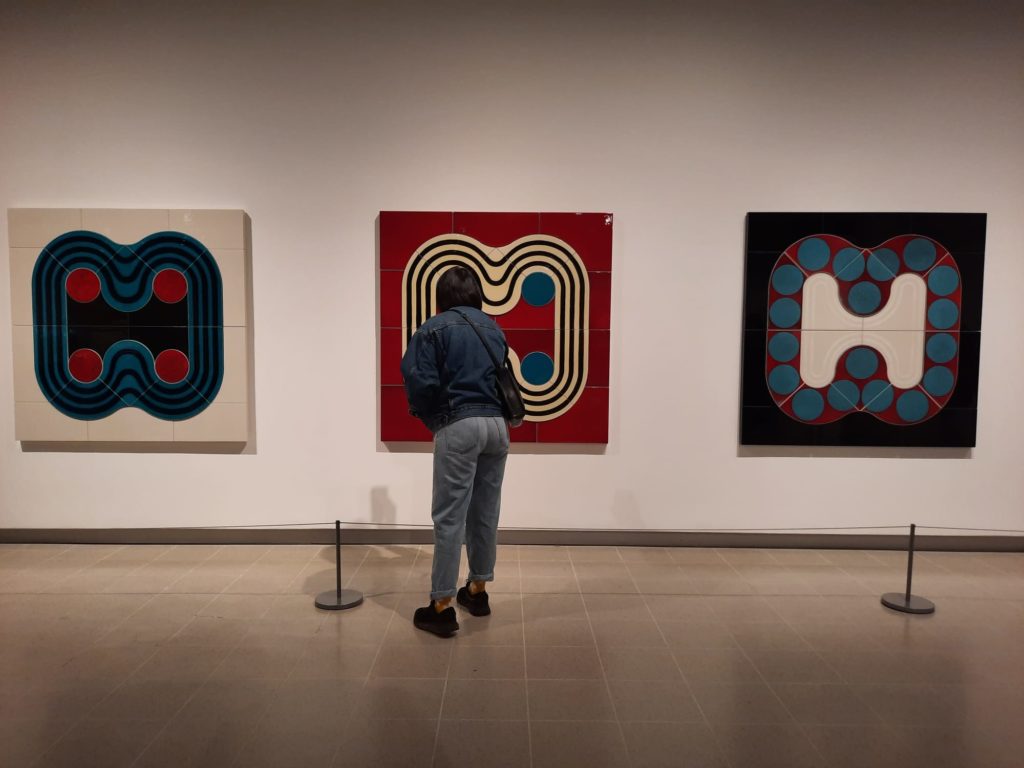
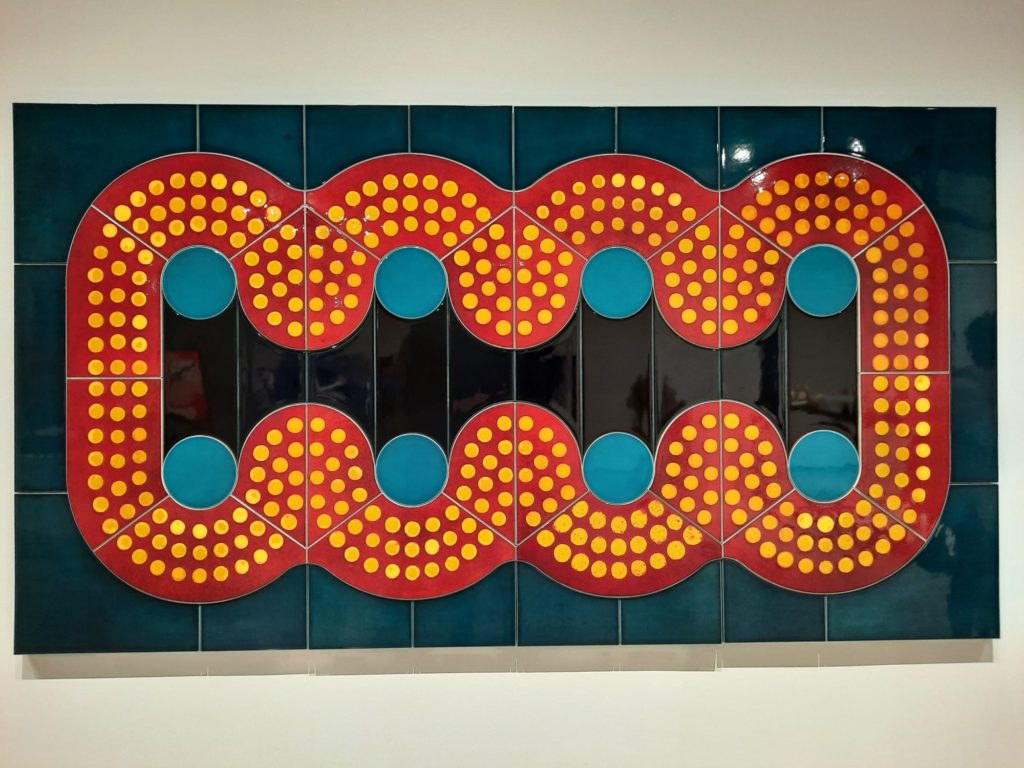
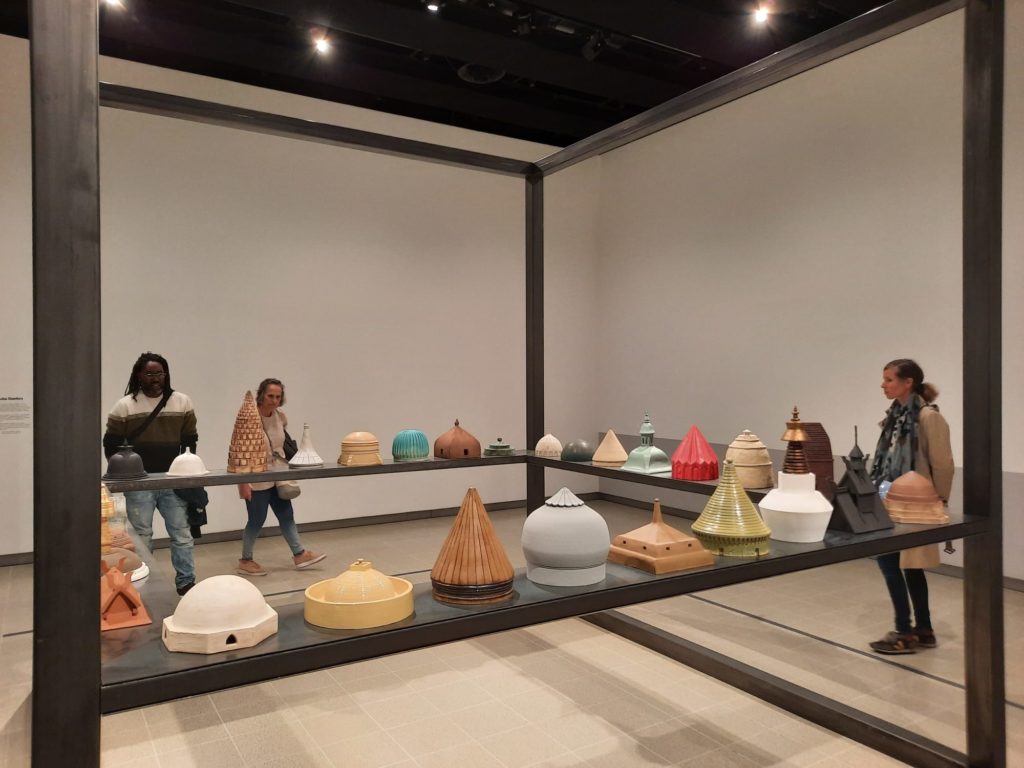
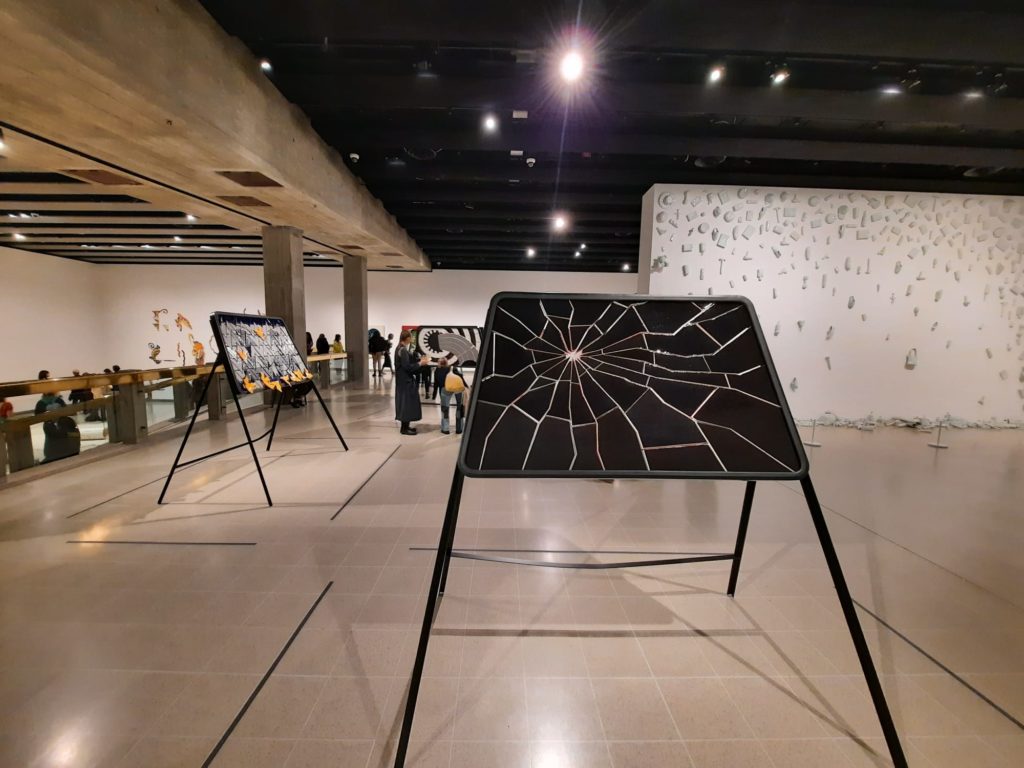
Strange Clay
For some reason I didn’t expect this exhibition to be quite as popular as it is. I’m not sure why – I myself have sought out contemporary ceramics exhibitions in London and further afield. It stands to reason this is something other people enjoy as well. Maybe I still have some sort of bias towards ceramics being… I don’t know – something of less general appeal than other artistic media? A ‘craft’ rather than ‘high art’? This is all clearly my own art historical baggage – it’s a good thing I have exhibitions like this to help me get over myself!
Strange Clay: Ceramics in Contemporary Art is a very good place to take a fresh look at ceramics and the artists who work in this medium. It follows a fairly standard layout for the Hayward Gallery‘s group exhibitions, where space is given to each artist for one or multiple works. Artists are thus placed in dialogue or juxtaposition across techniques, geographies and messages.
As always with Hayward Gallery exhibitions there is a broad selection. Artists from Europe, the Americas, Africa and Asia. Household names like Grayson Perry. Established artists like Edmund de Waal, Rachel Kneebone and Magdalene Odundo. And artists who were new to me like David Zink Yi and Klara Kristalova.

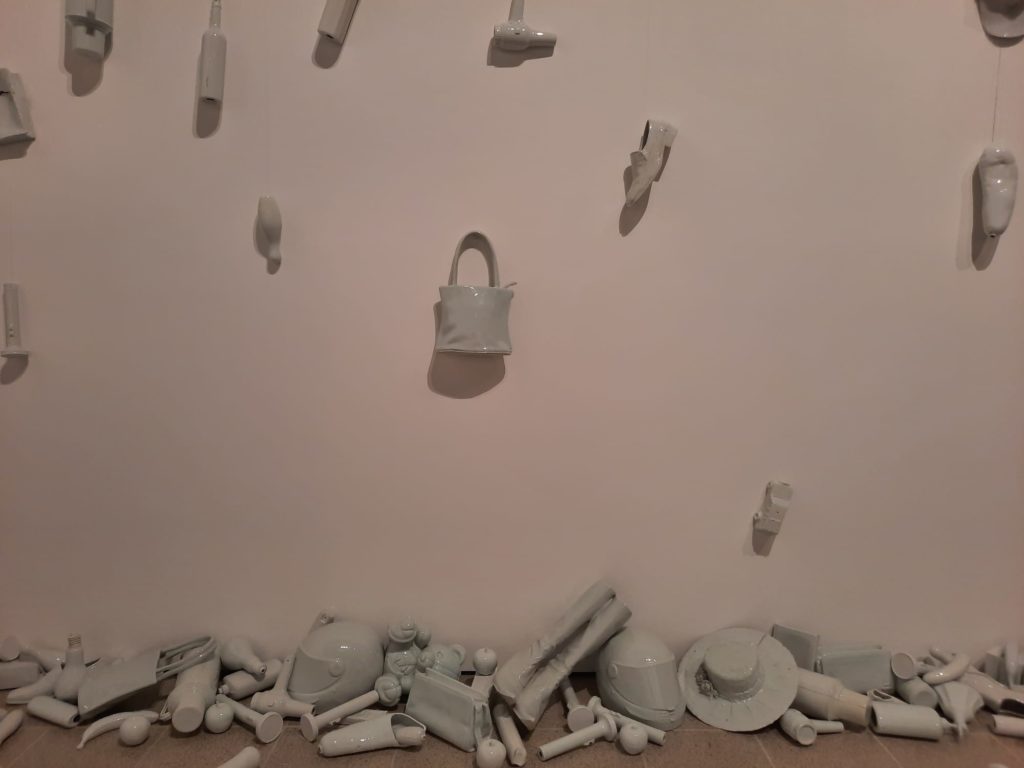
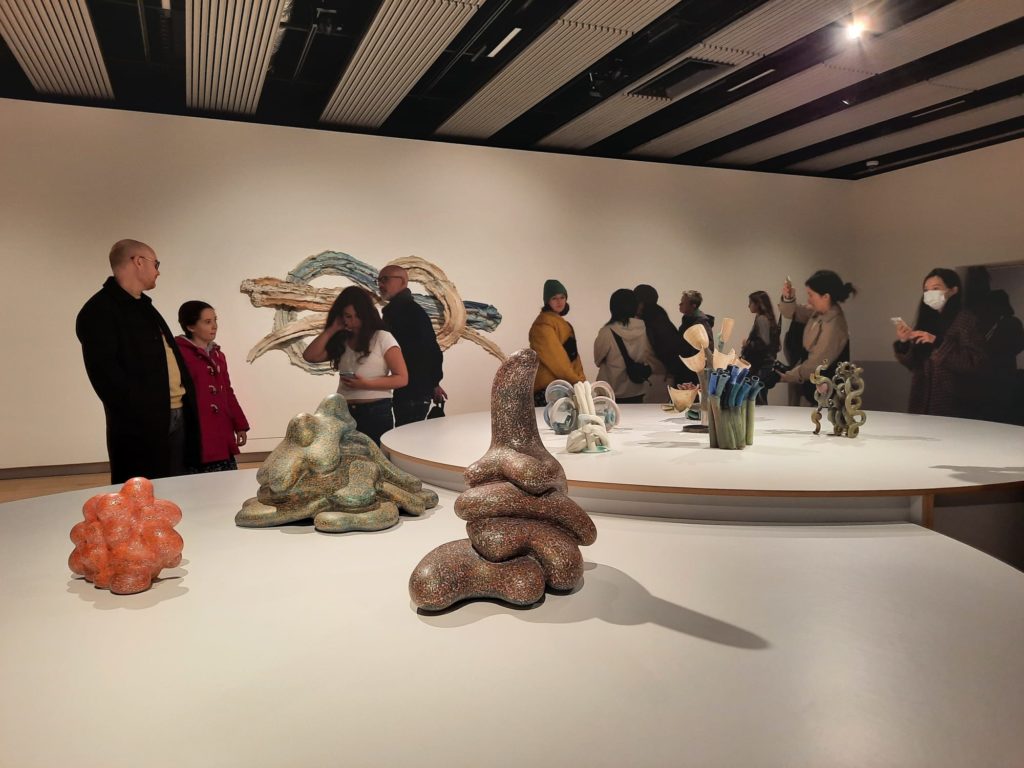
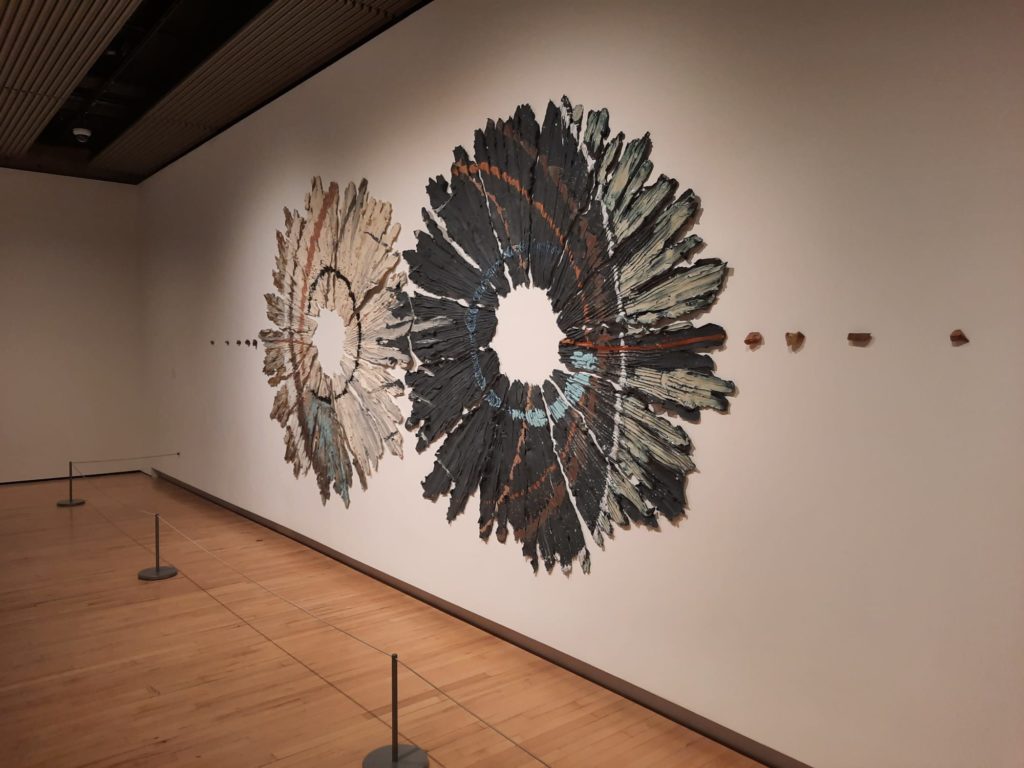
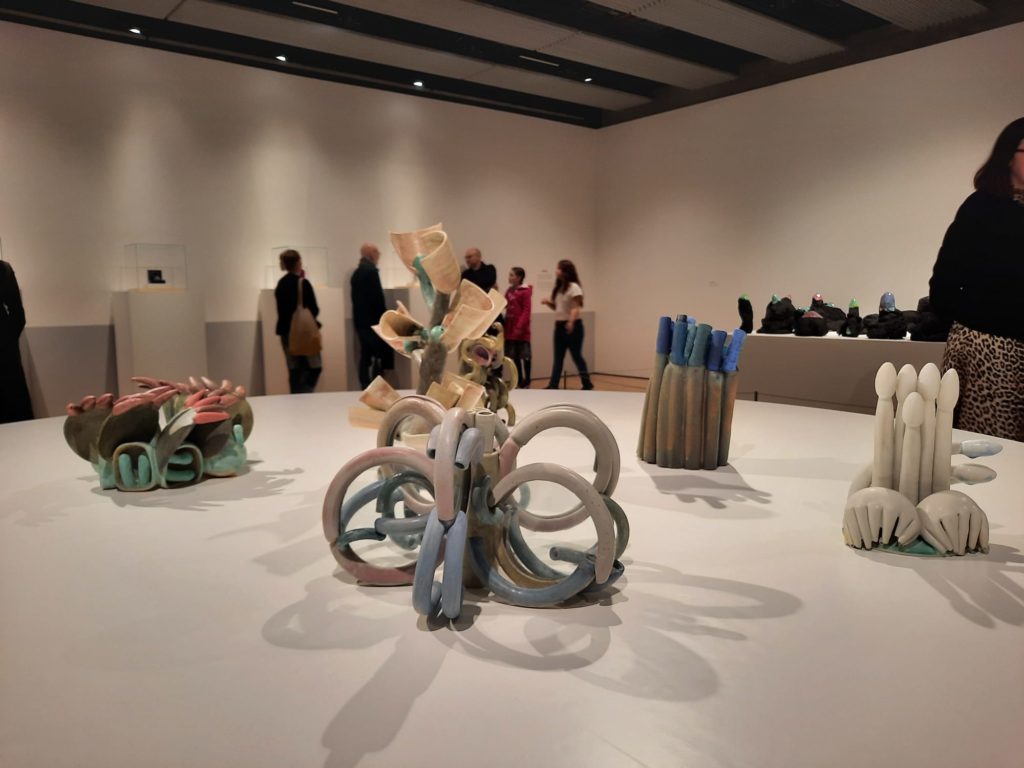
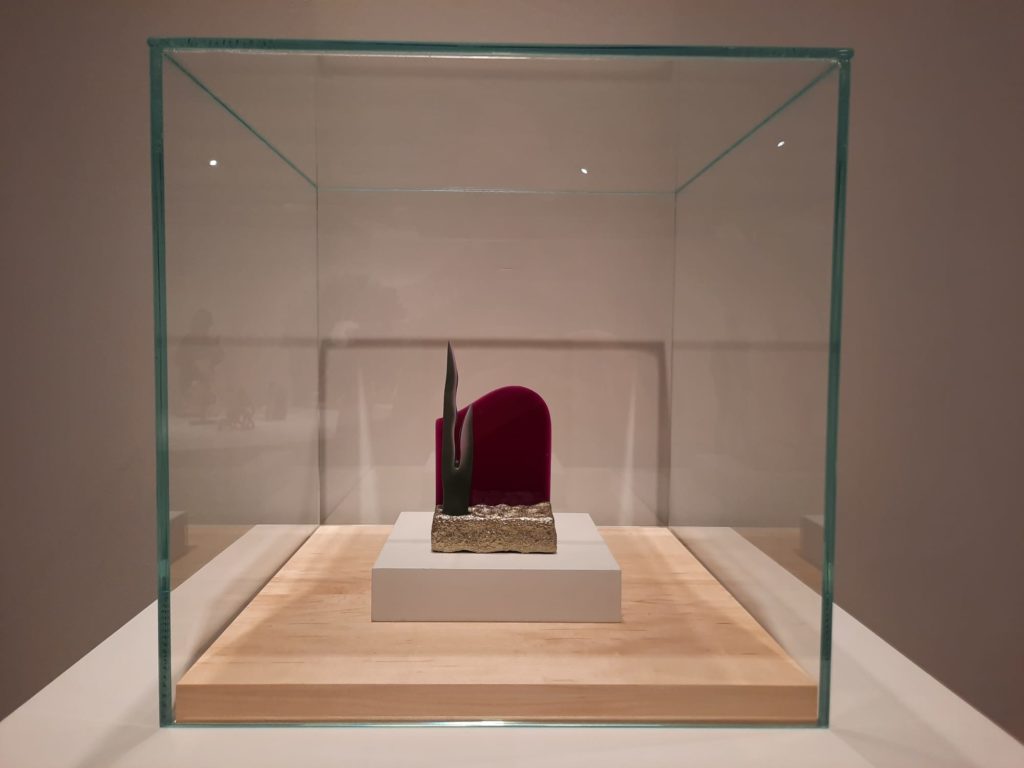
Contemporary Ceramics
The thing about an exhibition about contemporary ceramics is that clay is the quintessentially malleable medium. You can do with it what you will. So it’s no surprise that there is such a wide range of styles amongst the artworks. Some are flat, like tiles. Some are three-dimensional. There are even immersive installations. A few of the artists move beyond the confines of pure clay and include other objects: plants, or even something viscous resembling squid ink! Works hang above us, on the walls, are behind glass and even inside gutted sofas (see below). An exhibition of painting just can’t achieve this breadth and variety.
I found some of the work quite conceptual. Unless you go around reading the wall panels you won’t know that Brie Ruiais used twice her bodyweight in clay to evoke the shape of mining sites in the American Southwest. Or that Liu Jianhua’s suspended household objects in celadon glaze are a reflection on a series of aviation disasters. Sometimes you can pick up the artist’s intentions a bit more easily, like Emma Hart’s ceramic double-sided panels which depict the sights looking into or out of a windshield. Or Shahpour Pouyan’s little historic architecture models, representing different countries returned in his DNA results. For all its aesthetic interest, it’s quite a ‘thinking’ exhibition.
I tended to like the rather delicate works. Those by Rachel Kneebone, for instance, appear fragile, like you could break a bit off just breathing on it. I liked Ron Nagle’s small-scale works on pedestals. And most of all I loved the giant squid by David Zink Ye, a Peruvian artist living and working in Germany. It’s so unexpected, sprawling on the floor of the upstairs gallery. And must be very technically difficult to have achieved, to boot.
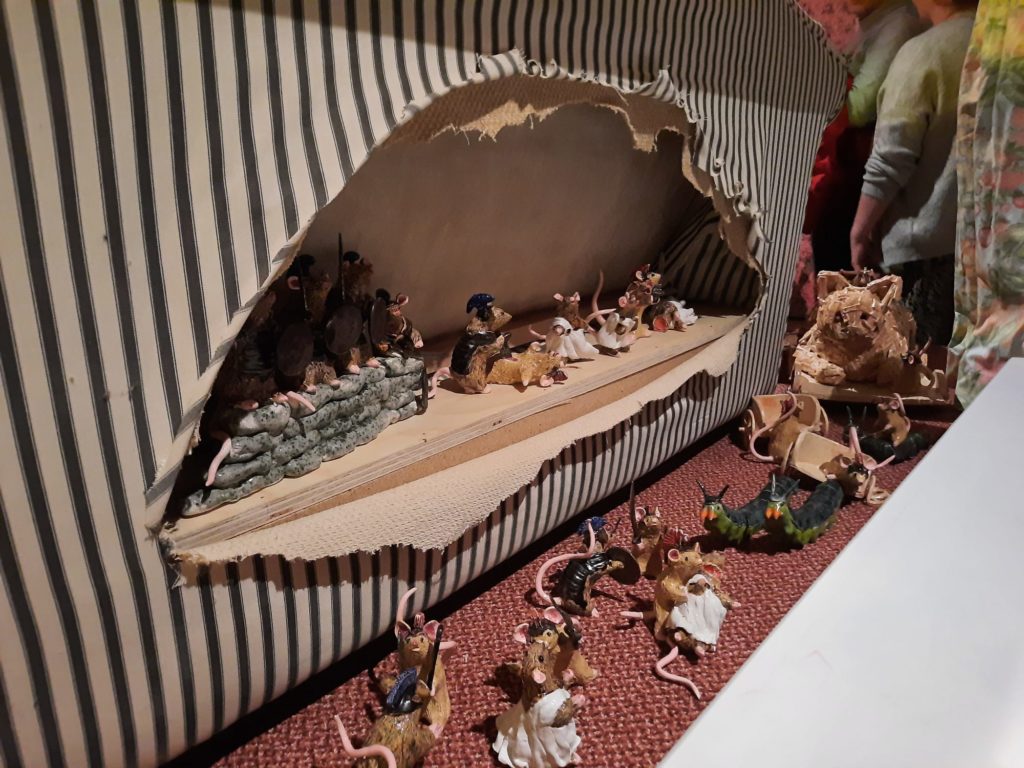
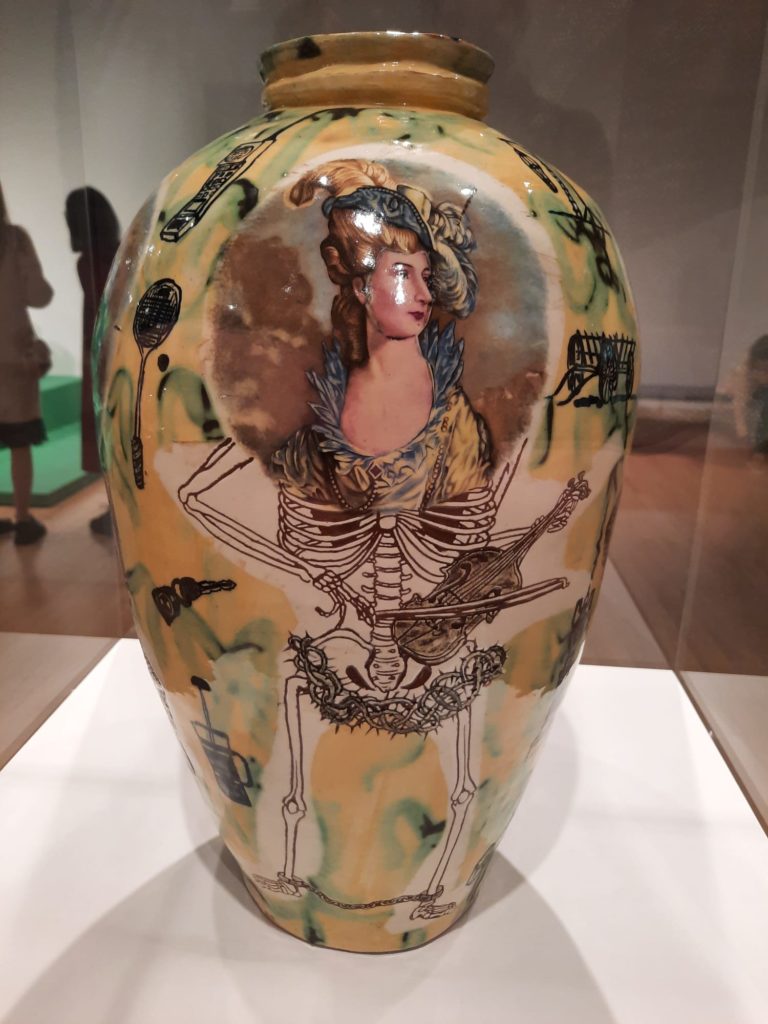

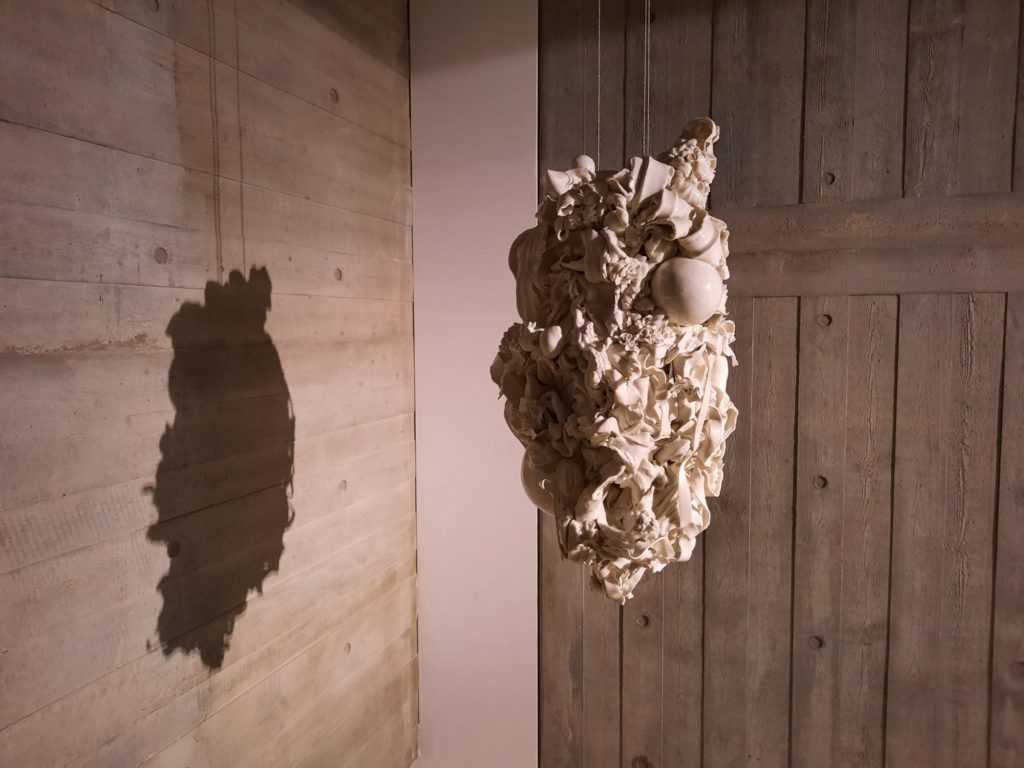
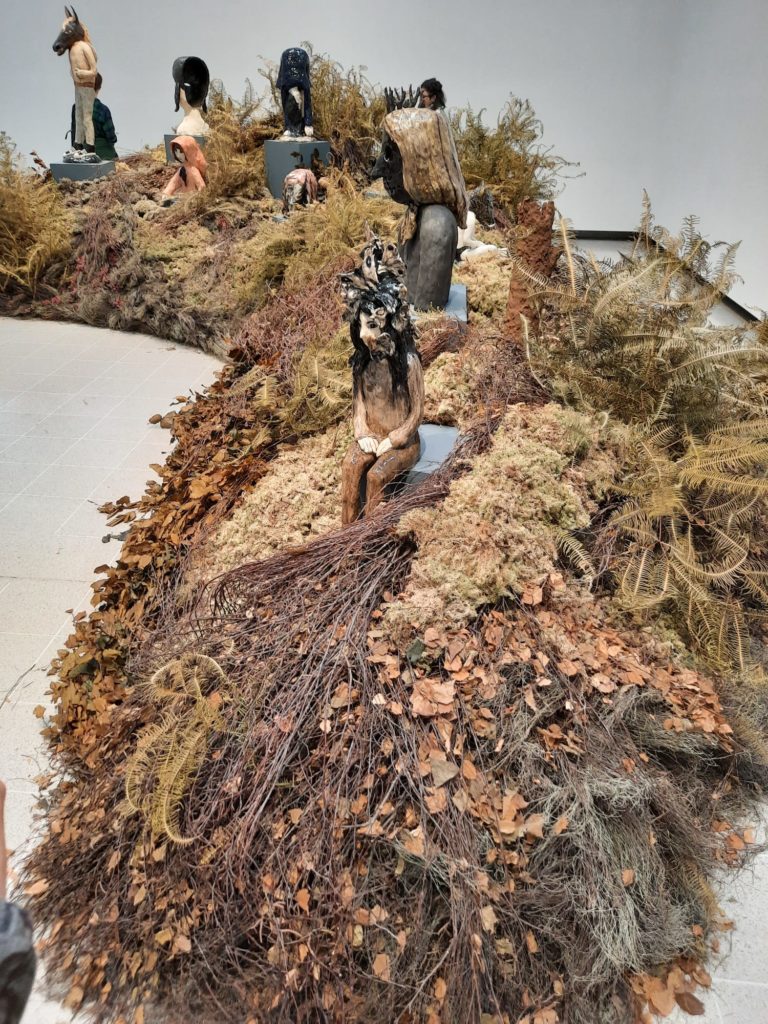
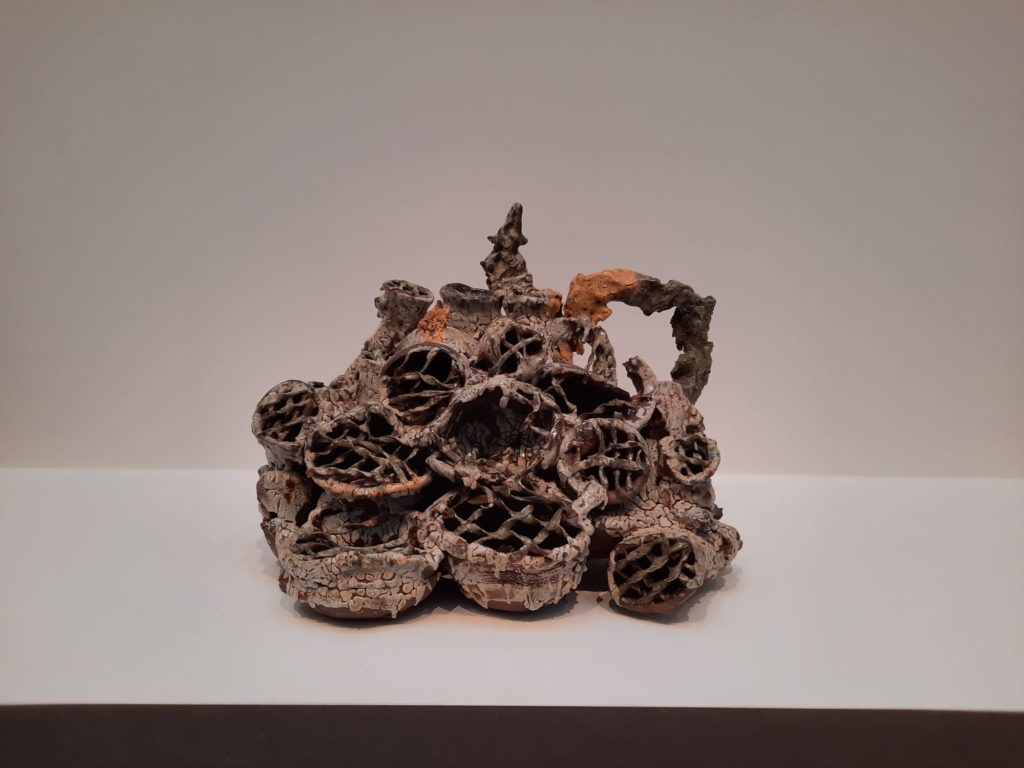
What Ties It Together?
Perhaps very little? After all the Southbank Centre’s website explains the intent of the exhibition as exploring “how contemporary artists have used clay in unexpected ways”. So the fact that around every corner there is something new is entirely the point. The artists haven’t been chosen because they share a point of view or are responding to a common theme. The idea is to open up new horizons by bringing together as many techniques, scales, finishes and sources of inspiration as possible.
So in the end we come back to the clay itself as the sole thing tying the exhibition together. This isn’t necessarily a bad thing. It does what it says on the tin, after all. I enjoyed seeing the scope and imagination of these contemporary ceramic artists. And so do many others, based on the audience numbers.
The Hayward Gallery’s other aim in staging this exhibition seems to be to further the dialogue around art vs. craft when it comes to ceramics. As I stated at the outset, even I have internalised a sort of art historical heirarchy, with clay often falling at the ‘craft’ end of the spectrum. There’s a male/female dimension to this. And an ‘indigenous’ or ‘traditional’ skills element too. All biases which feed into our sense of what is domestic and valued accordingly, and what is ‘art’ for a public audience. The context can matter as much as the intent, in some instances. When I saw an exhibition of Gee’s Bend quilts, for example, they were very much made by women as domestic items but had been ‘translated’ into a gallery context. In the current exhibition, the creators have uniformly set out to make art. It shows a certain confidence in the clay to carry the weight of that artistic expectation. And coming back to the variety seen in this exhibition, gives a lot of space to reflect on the place of ceramics in contemporary art.
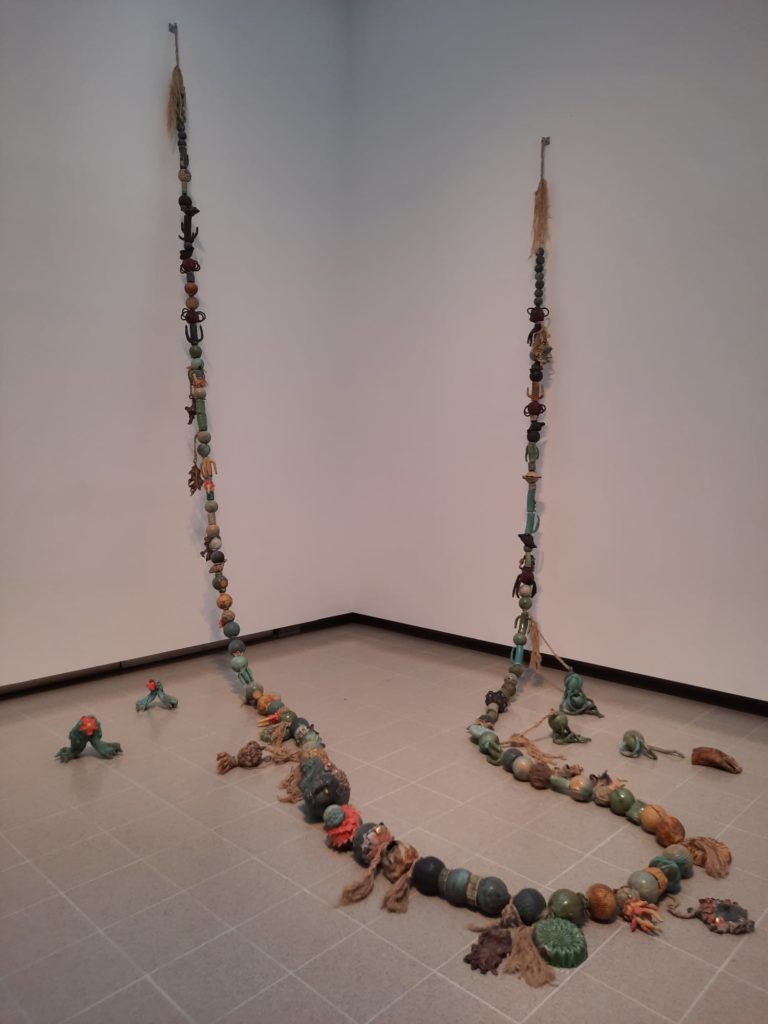
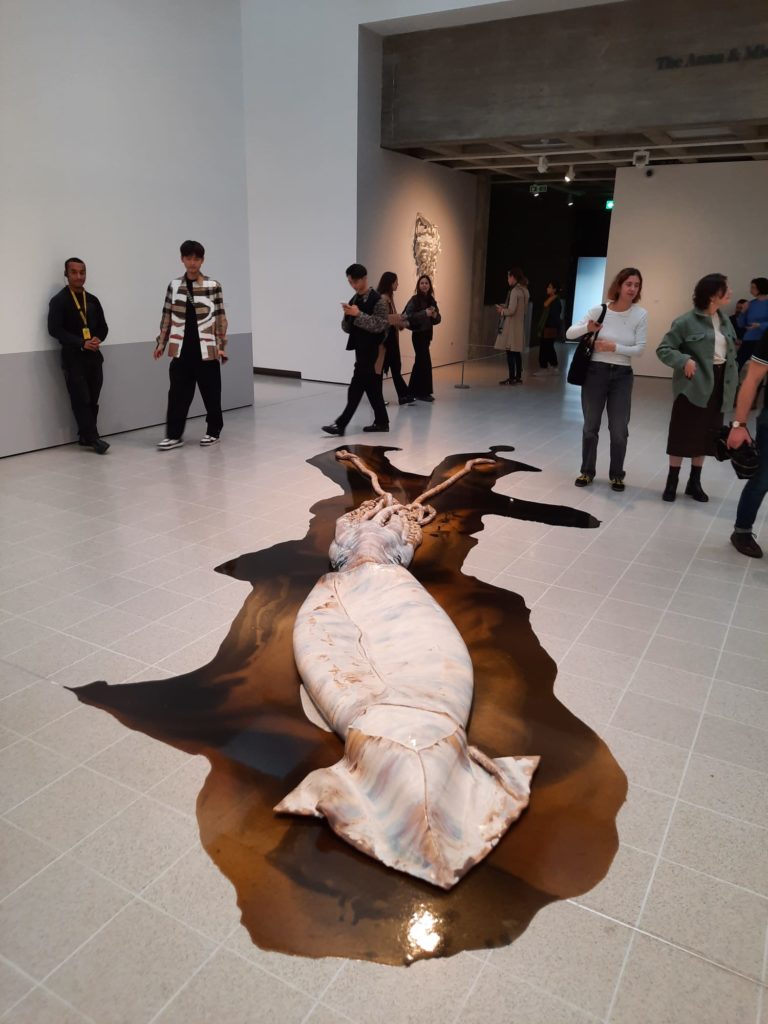
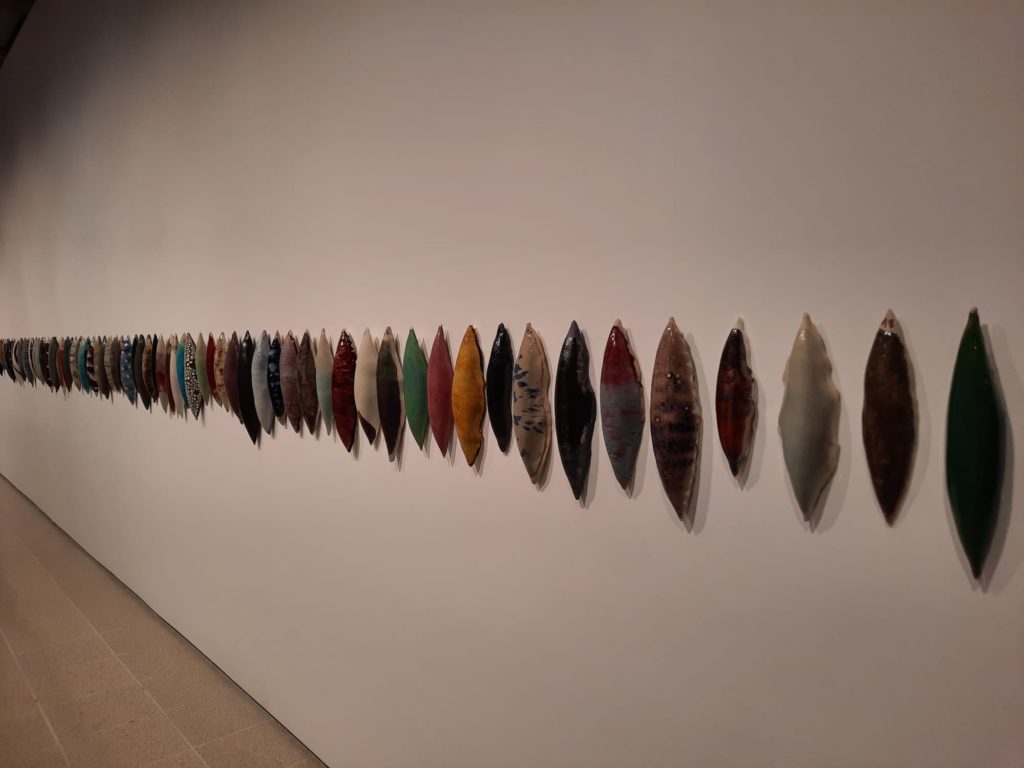
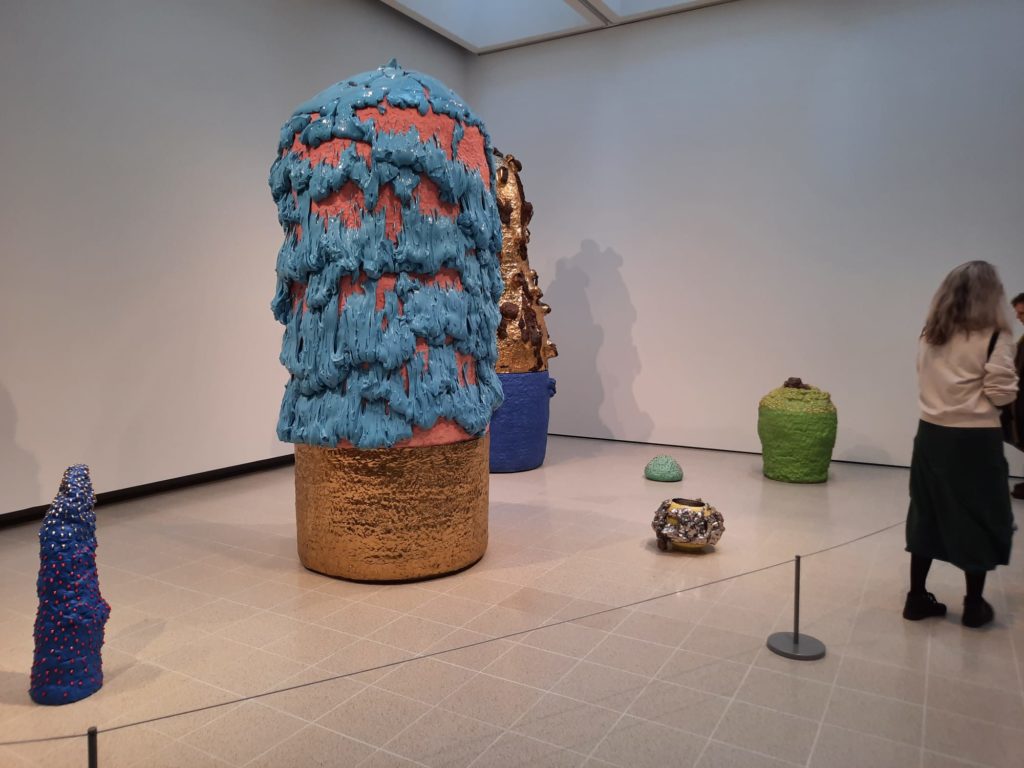
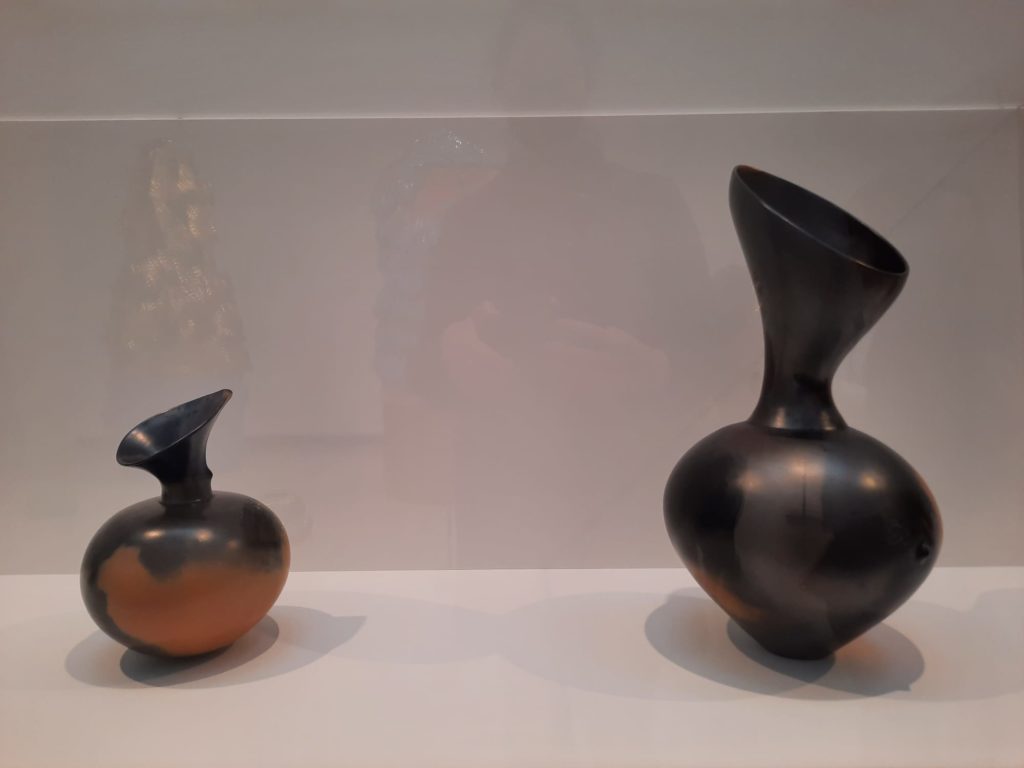
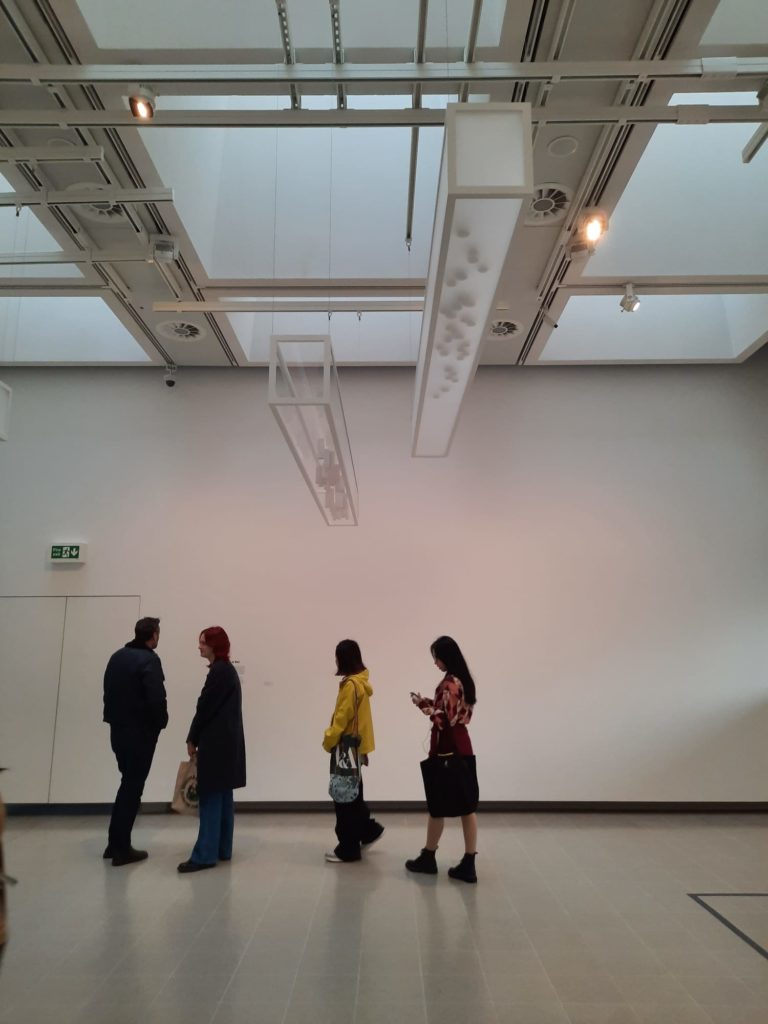
Final Thoughts On Strange Clay
A lump of clay is nothing but potential. It can be any number of things, fulfil any number of functions. As this exhibition shows us, even if that clay is chosen to become a work of contemporary art, that can mean any number of things. This is an exhibition that gets the imagination firing. You come away with a sense that the possibilities of this medium are practically limitless. The place of ceramics in contemporary art seems assured.
At the end of the day I think Strange Clay is so popular because it’s fun. It’s fun to see all the different permutations. To wonder at the techniques and appreciate the varied glazes and finishes. While the themes or subject matter of some of the works may be challenging, overall this is an exhibition that stimulates visually. For that reason (and also because a lot of the works are large rather than being small and detailed and requiring a lot of time) we were finished quite quickly. This is an exhibition to slot in before or after another weekend activity. Perhaps a mulled wine at the Southbank Centre’s winter market?
Salterton Arts Review’s rating: 3.5/5
Strange Clay: Ceramics in Contemporary Art on until 8 January 2023
Trending
If you see this after your page is loaded completely, leafletJS files are missing.

